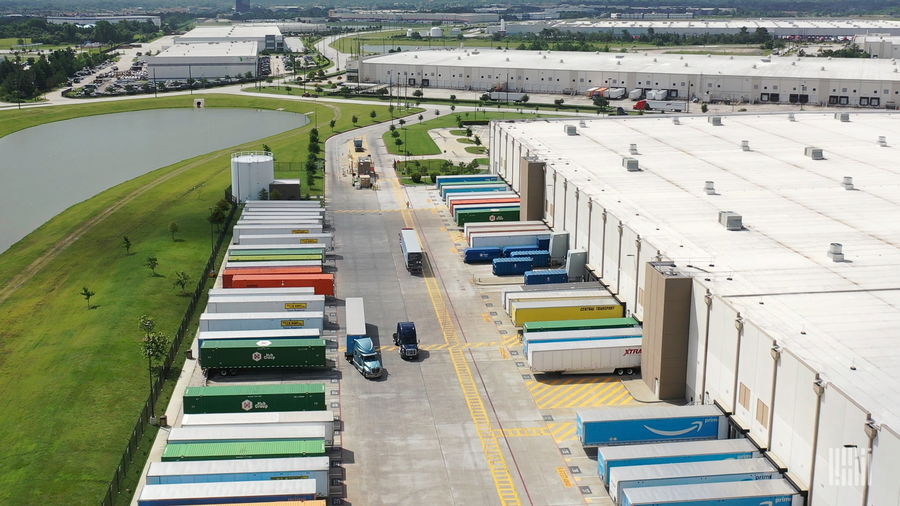In today’s newsletter: Enterprise carriers race to innovate; Component shortage delays electric vehicles; ATRI top truck bottlenecks of 2021.
Enterprise carriers race to innovate by embracing new technologies and partnerships

Trucking companies are racing to catch up to the technological disruption brought by digital load boards and freight tech offerings. For large enterprise carriers, there is a sense of urgency, as digital trucking startups and brokerages represent real challenges to their business models, and shippers are increasing their expectations on pricing and truck visibility.
With autonomous trucks on the horizon, there is an immense opportunity to gain scale through adoption or development of new technologies. Automation is moving from an industry buzzword to real savings on the corporate balance sheet, and shareholder pressure will incentivize trucking companies to either adapt to the digital trucking revolution or become a casualty of it.
Below are a few recent news examples of enterprise carriers embracing technology and innovation.
J.B. Hunt
- J.B. Hunt 360 integrates with KeepTruckin to bring load visibility to the KeepTruckin smart load board, increasing capacity for brokerage customers.
- Partnership with Google on AI and machine learning, using Google Cloud for pricing visibility and predictive analytics.
Werner
- Integrates with Decisiv’s Service Relationship Management platform to expand its repair network via API connections to the Werner EDGE platform.
- Deployment and investment in Mastery Logistics Systems, a TMS startup founded by Paul Loeb and Jeff Silver.
- Addition of predictive freight matching with the Trucker Tools platform.
- Deployment and development of Werner EDGE mobile fleet management program.
Schneider
- Development and release of Schneider FreightPower digital load board and marketplace for shippers and carriers.
- Partnership with the Driver Alcohol Detection System for Safety Program to test in-cab breath sensors and prevent drunk driving.
U.S. Xpress
- Xpress Technologies’ development of a digital brokerage platform and digital asset-based fleet, Variant.
Component shortage impacting electric vehicles and Class 8 orders

The component shortage continues to impact the trucking and automotive industry. According to FTR Research, Class 8 orders hit their lowest total since 1995, dropping 41% from the previous month. This shortage also impacts development and manufacturing of electric vehicles, with Tesla announcing during the annual shareholder meeting that Tesla semi truck production is pushed back to 2023.
Electric tractors will require magnitudes more semiconductor components compared to a traditional Class 8 tractor. To illustrate this daunting challenge, below are some quick facts on what makes electric vehicles so challenging and on the sensitivity of supply chain disruptions.
- A conventional truck can require around 500 semiconductors, whereas an EV could require over 5,000.
- A major requirement of EV semiconductor demand involves chips that convert AC power into DC power, which is then stored in batteries to power the trucks.
- The converter box that controls this process requires additional chips.
- Additional components such as communication systems, HVAC systems, doors, dashboards and lane control systems all require additional semiconductor chips and components.
Why it’s important:
Competition for chips and semiconductors in the automotive industry will continue to cause downstream issues such as limiting electric vehicle development. Due to the increasing complexity and demand for advanced sensors and connectivity for Class 8 tractors, I expect OEM manufacturers to create workarounds or invest in partnerships with chipmakers until production catches up with demand.
Market Update: ATRI 2021 Top Truck Bottlenecks

The American Transportation Research Institute (ATRI) collected GPS data from over 1 million freight trucks over the course of a year and just released the 2021 Top Truck Bottlenecks list. What makes this data interesting is the effect the pandemic has had on 2020, highlighted below:
- In March 2020 ATRI found average truck speeds at historical truck bottlenecks improved by 100% or more as car drivers sheltered in place from quarantine rules.
- April 2020 saw state-level truck activity increase, as panic-buying drove up consumer demand, then decreased as businesses closed.
- May 2020’s ATRI truck activity index improved, showing movement to a return to pre-pandemic freight demand.
- Roadway construction projects were executed at an accelerated pace due to fewer vehicles on the road during the pandemic.
- The second half of 2020 saw increases in traffic levels due to congestion caused by increased traffic going through those accelerated construction projects.
FreightWaves TRAC lane spotlight: Chicago to Charlotte, North Carolina

Commentary courtesy of FreightWaves SONAR sightings
Overview: Chicago to Charlotte rejection rates are nearing 21%.
Highlights:
- According to FreightWaves TRAC, spot rates have increased roughly 5 cents per mile, to $4.12, in this lane over the past four days, and have increased over $1 per mile over the past month.
- Rejection rates are back on the rise out of Chicago, and lane-specific rejection rates to Chicago are also moving higher above the market average — both are now over 20%.
- Charlotte continues to be a well-supplied market with a -84 Headhaul Index value and an outbound rejection rate of 17%, which is below the national average.
What does it mean for carriers?
Cover this lane on the spot market as rates have risen dramatically over the past month. Charlotte’s outbound rejection rate is at its lowest point since June 2020, indicating it is stabilizing with less reload potential.
The routing guide: Links from around the web
The Great bifurcation: History of tech and thoughts about the future (Stratchery)
The Revised Psychology of Human Misjudgment, by Charlie Munger (Farnam Street Blog)
Why qualified drivers aren’t replying to your ads (Commercial Carrier Journal)
Carriers bet on Capacity as a Service (FreightWaves)
CARB approves ‘smog check’ regulation for in- and out-of-state trucks operating in California (Commercial Carrier Journal)
